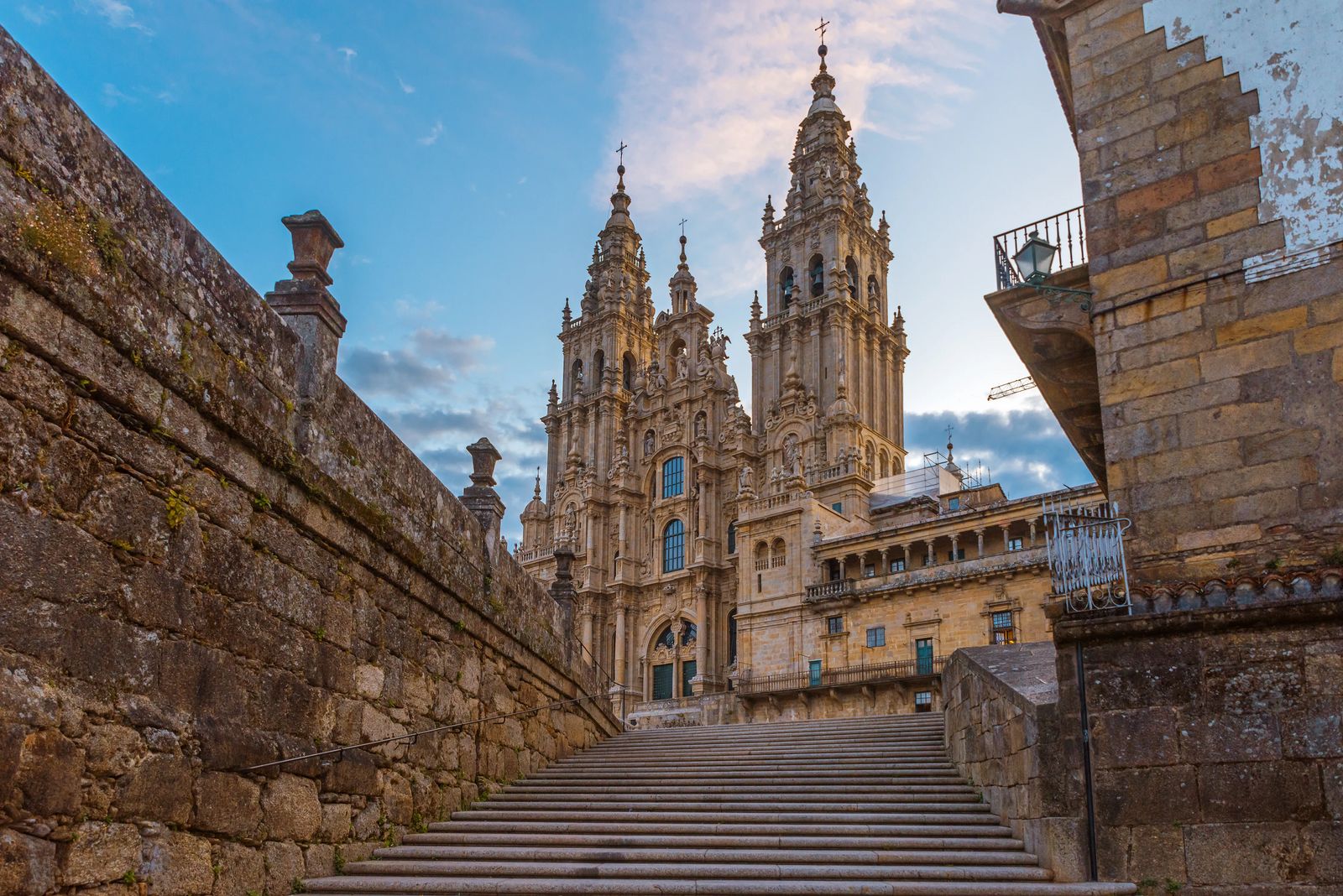
15 Best Things to do in Santiago de Compostela Spain
Walking from the train station to the center of Santiago de Compostela I could hear the familiar gong of church bells in the distance. My heart leaped a bit, I had imagined visiting this place since seeing Michael Douglas make the trek in the movie 'The Way'. For the character in this movie, it had been transforming and renewed his faith - I wondered if it would be the same for me. If it was a huge letdown, what are the best things to do in Santiago de Compostela instead?
I visited the area with some local friends in May of 2022, just before the busiest and hottest part of the summer hit. While there was still a steady stream of people making their way into the square, it was just enough that you could still have some quiet time to ponder life and its meaning.
There is a lot to see here besides the Cathedral de Compostela, like the Cathedral Museum, Pilgrims Museum, the oldest University in Galicia, small churches from the 14th century, and plenty of shopping and dining experiences to give you a taste of the Galicia food and the hospitality of the people that is famous around the world. So here is a guide to the best things to do in Santiago de Compostela for Camino pilgrims and non-pilgrims alike.

1 - Camino De Santiago
The Camino de Santiago (Way of St. James) is a Europe-wide network of trails that converge at Roncesvalles and Jaca near the Spanish border and then continue the 800 km route west through northern Spain to Santiago. The most popular route, of the 7 Caminos or routes available, is the Camino de Frances. It's a Catholic pilgrimage to Saint James' supposed final resting place at the cathedral.
The official start of the Camino de Frances is in Saint-Jean-Pied-de-Port, a French village at the foot of the Pyrenees. Because the Camino de Santiago official seal of completion requires just a 100km route, rather than the full 800km, many pilgrims start in Sarelles France.
Pilgrims pack small bags with minimal supplies and stay in hostels and hotels along the Camino as they walk the required route. The Way, as many call it, is a tough walk hike through Northern Spain's beautiful countryside.
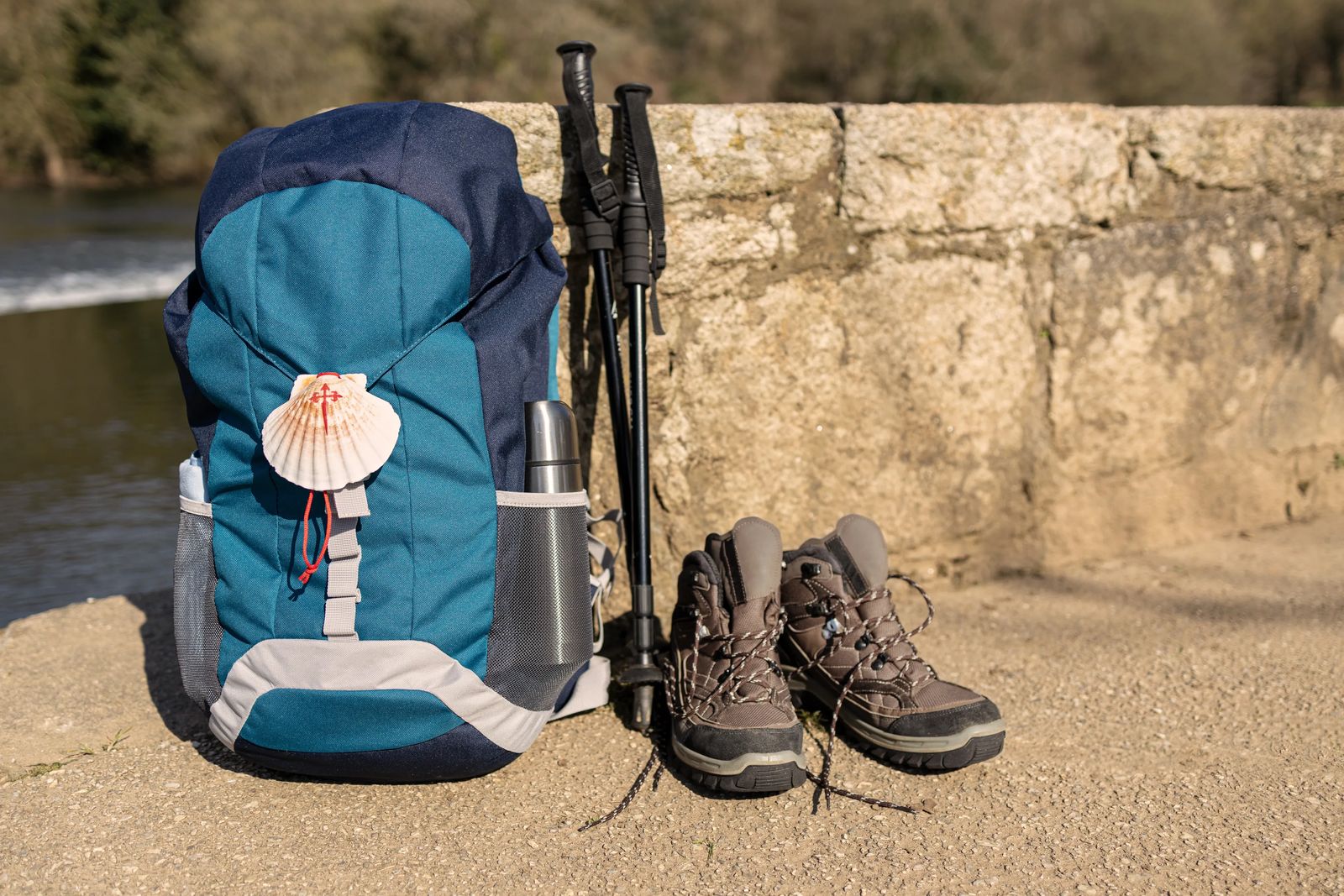
As a pilgrim, you walk along marked paths, with scheduled stops along the way at small churches and approved locations, like century-old restaurants that have fed pilgrims. Each approved stop has an official stamp that you get and must stamp your passport along your route to get the official seal of approval for completing the journey.
The thing that I believe is the most meaningful is the long journey, of your own strength, walking the long way just as medieval pilgrims have done for centuries. To be alone with your thoughts for that long, traveling with yourself or your closest friends is what makes it meaningful.
In an age where distractions and instant gratification rule our daily lives, to have time to just be human, challenge ideas and ideals, and face our inner demons while getting 'nature therapy' and having humble Spanish priests to bounce off the more difficult ideas with along the way is something I think everyone should do.
While I'm not Catholic myself, I still think regardless of ideals and religion - having the time to hike the journey and end up at a stunning UNESCO site is an incredible journey that could have transformative effects for many.

2 - Cathedral Santiago de Compostela
Open daily from 9 am - 830 pm with free Entrance
Compostela means field of stars. Starting as a simple tomb that honored the Apostle and his relics the church slowly expanded and became what it is today. It is a saga that spans centuries. Go behind the altar, embrace St James and give thanks for safe passage. The Jacobean route of the Compostela is the only route that is traveled in the same way that it was back in ancient times. There were bloody battles between Christians and Muslims. Eventually, the borders were solidified and paths were paved in the 10th century.
Romanesque architecture construction started in 1075 under Alfonso VI, with the last changes here happening in the 18th century.
The entire city was built around this holy site, which still holds the remains of St. James under the exquisite Baroque Altar. You can enter the cathedral itself for free, with mass being held for pilgrims at 7:30 am, 9:30 am, noon, and 7:30 pm (during which photos are prohibited). If you would like to attend mass in English go to the Pilgrim's Office Chapel and they hold it there at 10:30 am.
Mass typically lasts about 30-45 minutes, and if you are lucky you can see the Botafumerio Ceremony where a giant silver incense burner attached to the ceiling swings through the cathedral burning incense.
It is run by 6 specially trained monks and only happens on Christmas, Easter, and during the peak Camio season (August-September). Some pilgrims said they saw it swinging at mass the day I was there, unfortunately, I let my social anxiety get the better of me that day and missed it.

They also have guided Cathedral and Museum tours (link to get your guide $15) as well if you aren't Catholic but curious about the significance of this site which is considered the last stop along the Camino de Santiago. The excavations underneath the cathedral are ongoing so I highly suggest taking this tour. There is a Roman village underneath the cathedral that dates from the 4th century and you can still see the Necropolis and Mausoleum, which partly makes up the urn with the Apostle's Relics.
You can also pay a little extra to do a separate rooftop tour of the Cathedral to get some stunning 360-degree views of the city.
For the best photo spot of the cathedral, head out to the Plaza Obradoiro which is the square in front of the Cathedral. If you come at night it is lit up beautifully and gives an ethereal feel of peace.
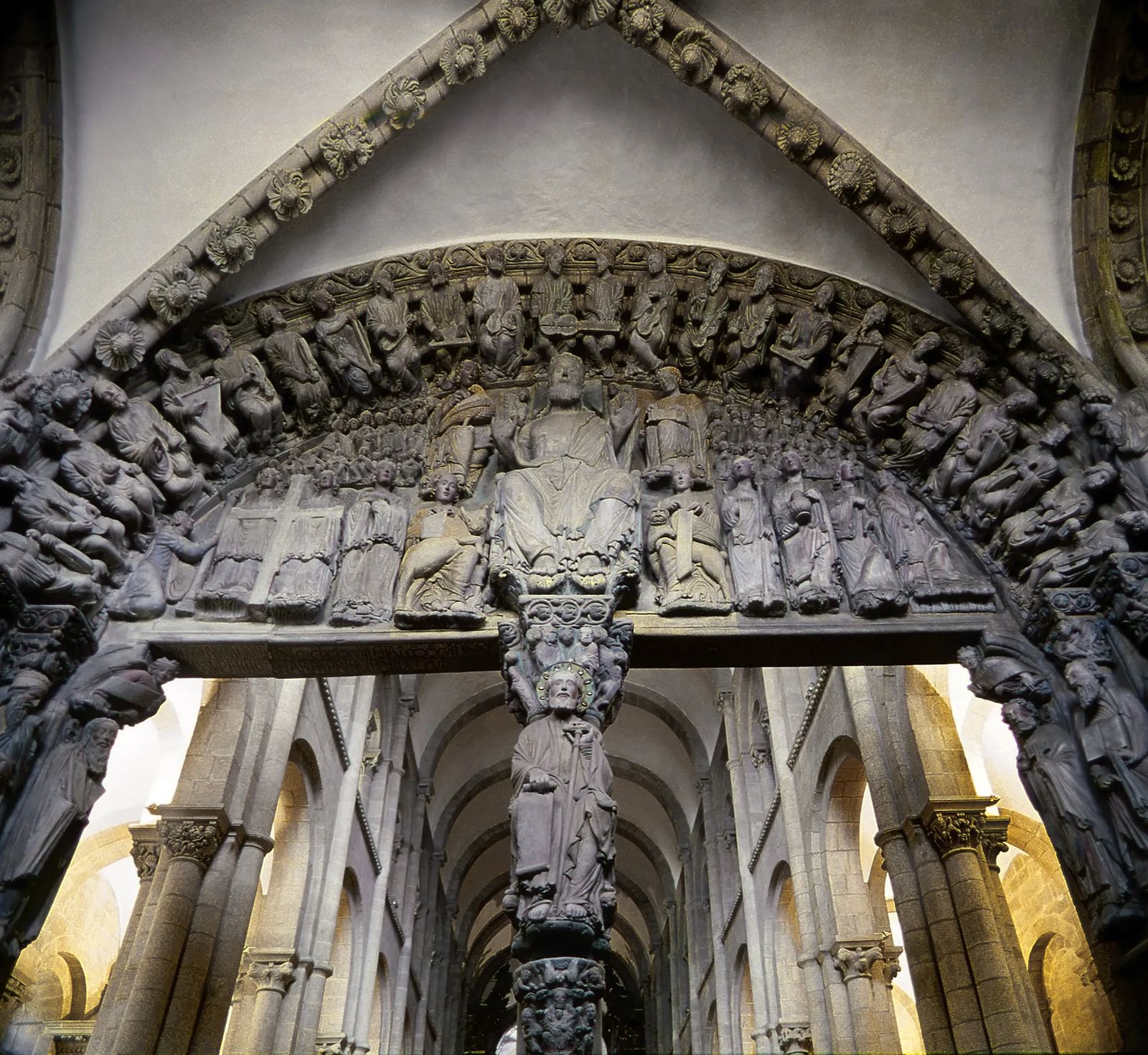
3 - Pórtico de la Gloria
This imposing gate is on the west entrance of the cathedral and is home to over 200 Romanesque sculptures crafted by Maestro Mateo in the 1100s. This was his life's work as the gate was not completed until 1211, just six years before he died.
The sad part is that if he backed out, or died, he would have had to pay 1000 gold pieces. You can see Master Mateo canonized at the foot of one of the pillars, later called Santo dos Croques.
He combined French, Italian, and Spanish influences into these granite sculptures and it was just at the juncture that Gothic Art was beginning to be popular. His goal was to inspire an apocalyptical scene, that would both make the viewer feel humbled and enlightened.
The left arch represents the people of Israel on the upper arch, with the mosaic law seen. Then you see Christ in Limbo after his death awaiting the final judgment represented in the right arch. You can see Christ and Saint Michael in the keystone, they are welcoming those who are graced with gods glory and damning the evil souls to live with the animals (the ones that represent evil) who appear to be tormented by this fate.
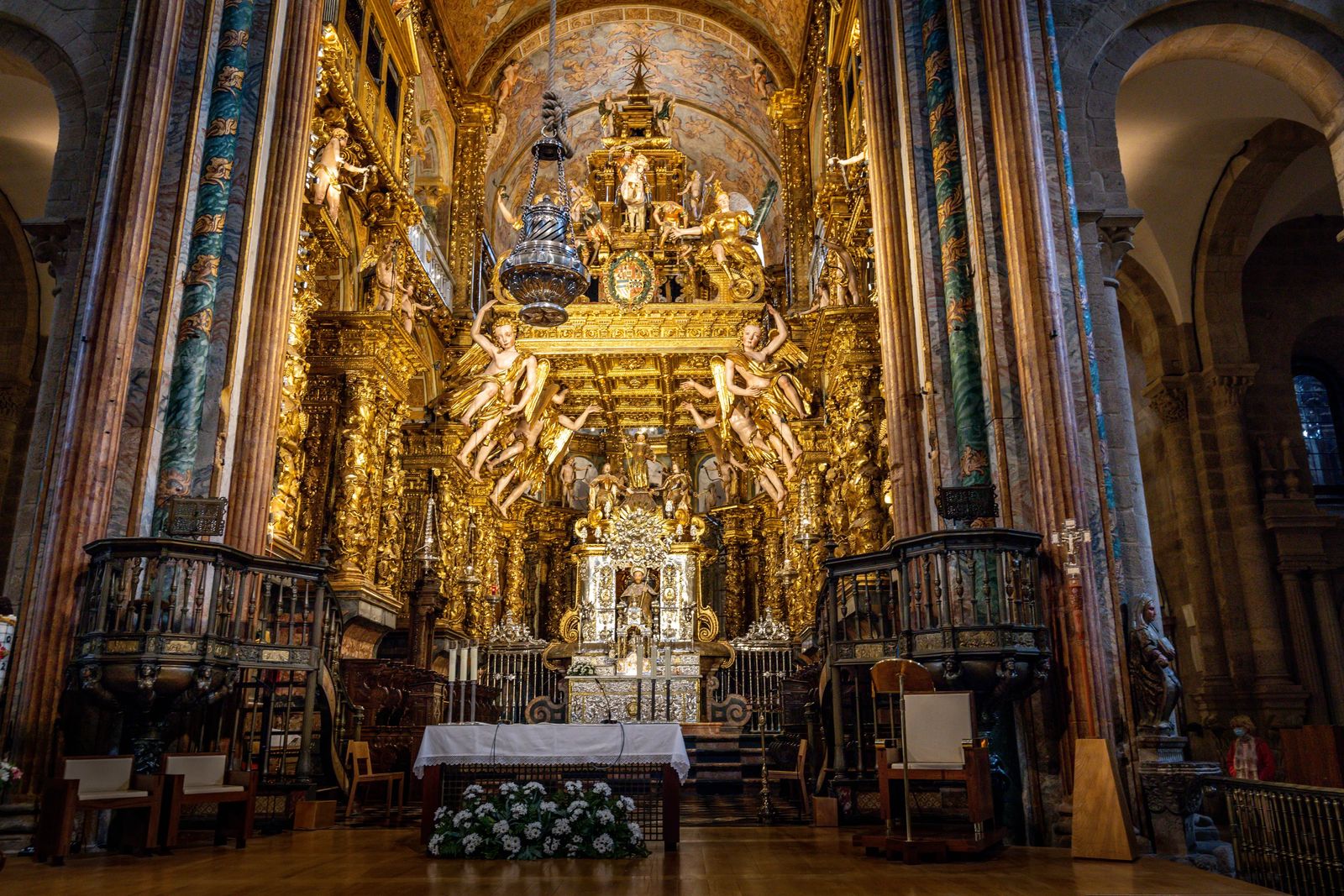
The center arch shows Christ in all his majesty, surrounded by four evangelists. There are angels playing instruments, his apostles just underneath him each with the distinctive emblems of their lives. You can see the commemorative piece, made in 1188, with Saint James on the great column.
In the left arch, besides its complex interpretation, the representation of the People of Israel can be seen in the upper archivolt, abided by the Mosaic law while, in the lower one, the descent of Christ into Limbo is represented. The Final Judgment is represented in the right arch, with the heads of Christ and Saint Michael in the keystone, separating the blessed, who are led to Glory, from the damned, who are placed under torment.
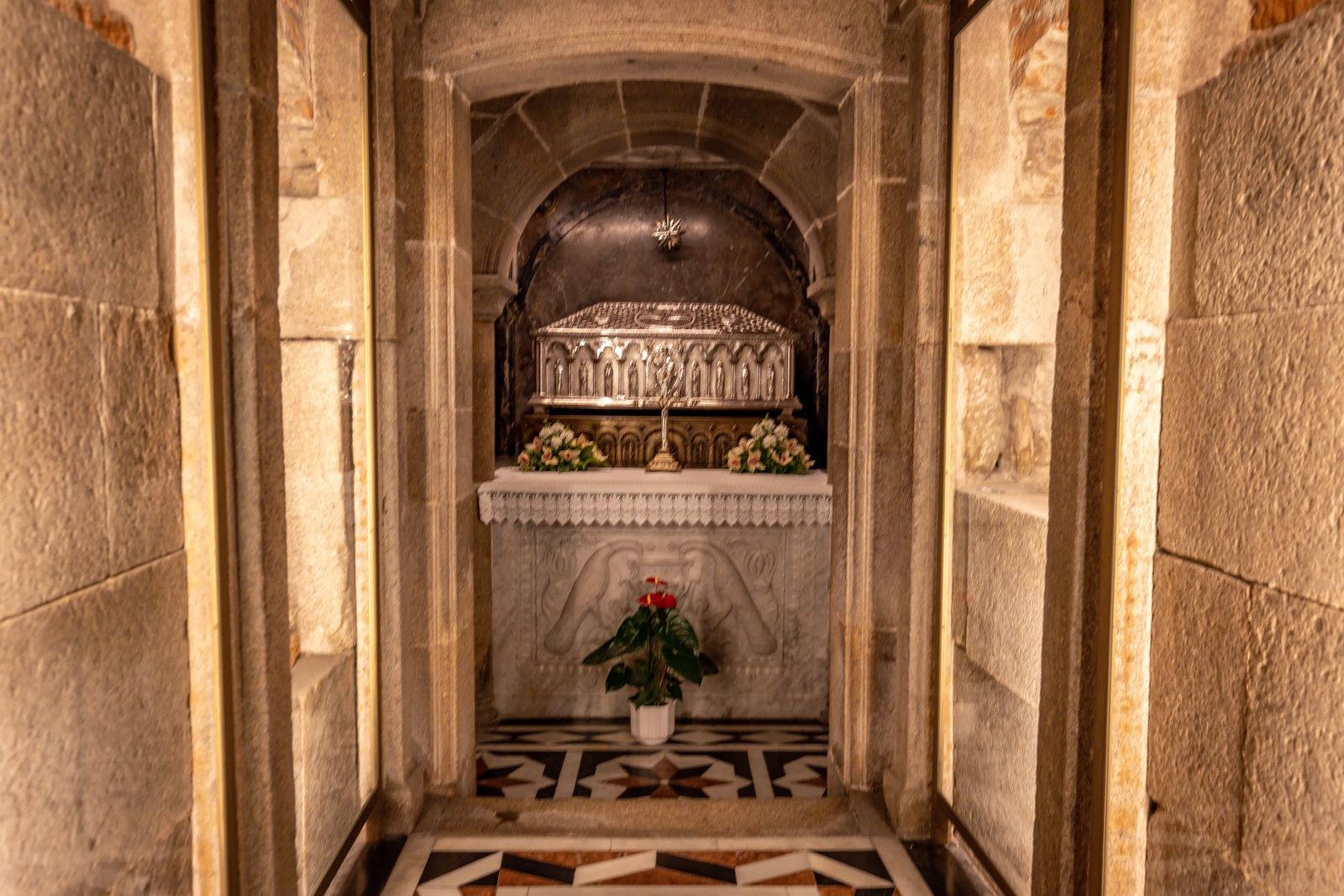
The Glory of the central tympanum is presided over by an image of Christ in Majesty, surrounded by the four evangelists and the group of the blessed. The angels with instruments of the Passion are represented in the lower part, and, in the archivolt, twenty-four elders tune their instruments to play celestial music.
The tympanum is supported by the lintels, with the commemorative inscription of its placement in 1188, and the seated image of Saint James the Great at the top of the column with the tree of Jesse dominating a mullion with the Tree of Jesse, the human genealogy of Christ that is completed with the divine one in the capital of the Trinity. The Santiago de Compostela Cathedral was dedicated on April 21, 1211.
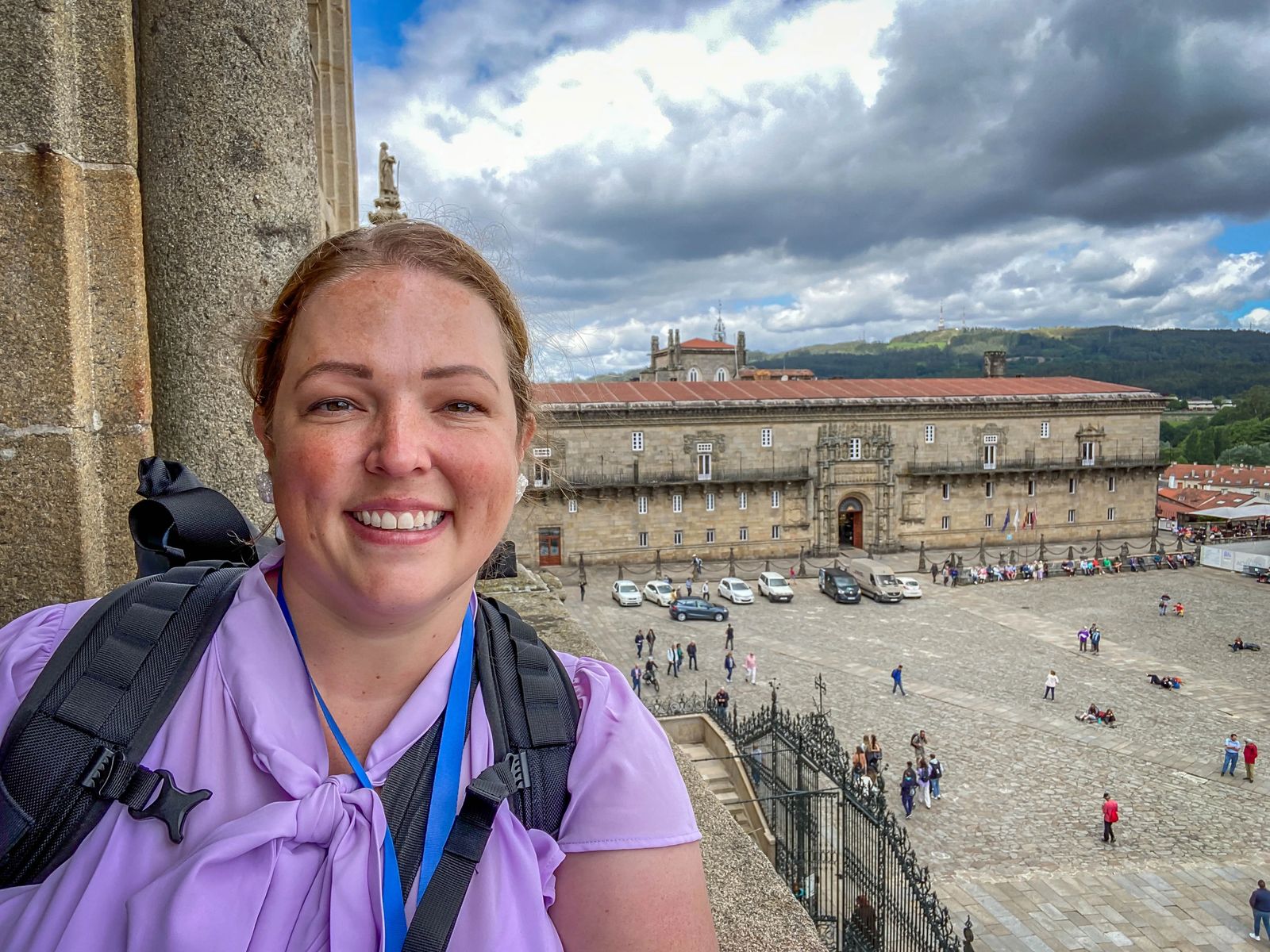
4 - Praza do Obradoiro
This square is the center of the city and where everyone gathers after completing their 100km/62mi journey. In the center, you will find a stone slab that marks 'kilometer zero" on the trail. You will find the groups of pilgrims gathered in the square holding hands, saying prayers, laying on the ground with shoes off, and reveling in the completion of a long journey.
Surrounding the square are four of the most important buildings in Santiago de Compostela. You of course of the O Obradoiro facade of the Cathedral that a picture of you in front of it, is basically a requirement.
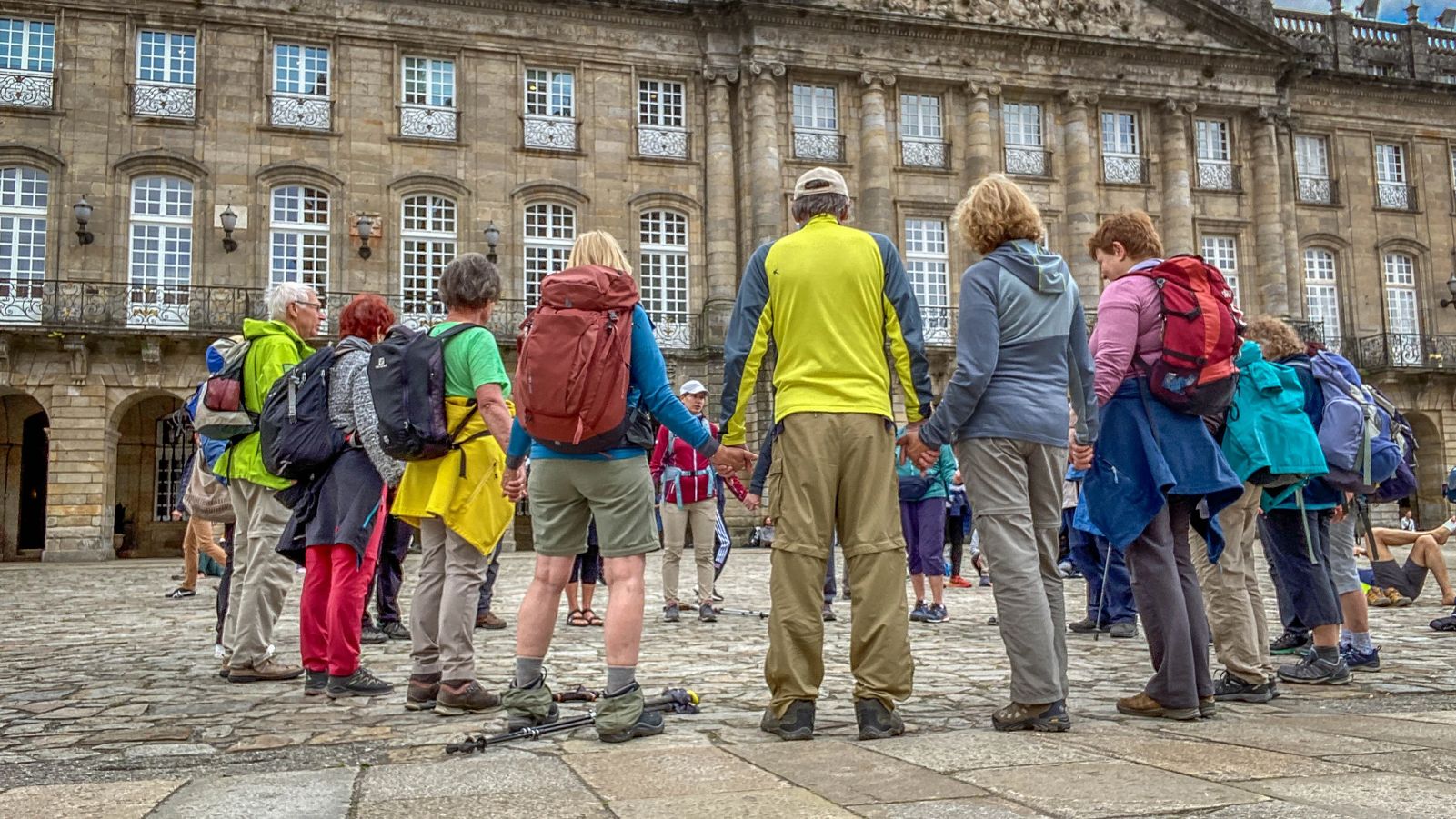
On the opposite side is the entrance to the Pazo de San Xerome (the University Rector's office), the Pazo de Raxoi (home to the President of the region), and the stunning Hostal de Los Catolico (built by Isabel and Ferdinand IV originally).
There are also two trains that stop in the square and provide a quick tour around the city. The white train will take you to some of the beautiful medieval parks in the city, while the red train takes you to the important stops within the city that are popular with tourists. The trains cost about 6 Euro and only accept cash so bring small bills with you.
If you come to this square on July 24th, you will be greeted with fireworks to celebrate St James Day. St James is the apostle from the Christian Bible whose resting place is believed to be in the Cathedral de Compostela.
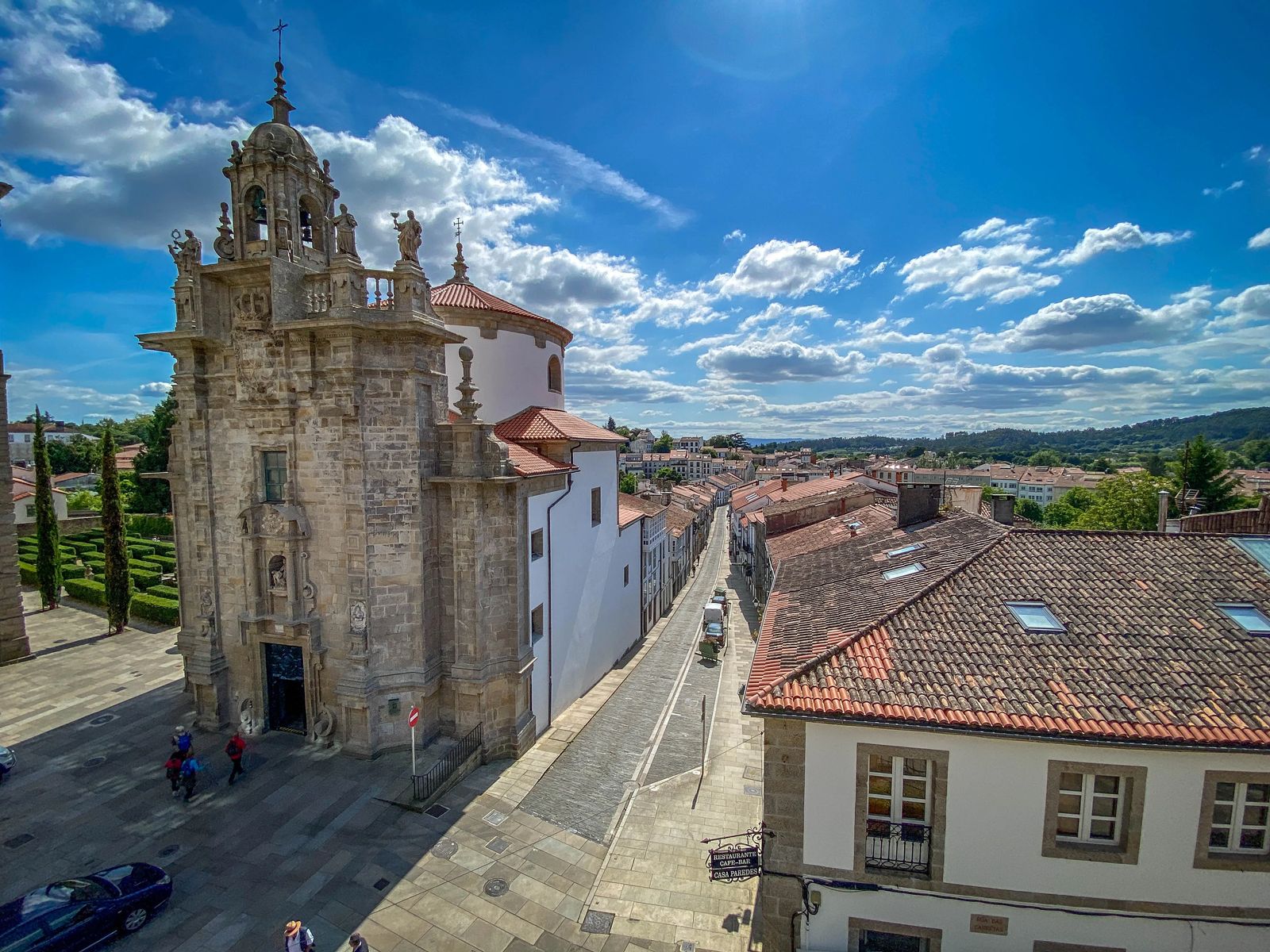
5 - Wander Around Old Town
You can also just get lost in Santiago de Compostela, find small shops throughout the city, off the main thoroughfare you can eat Octopus (a Galician delicacy) at a small mom-and-pop shop, or find the medieval churches that are often overlooked for the larger Cathedral.
You can also see other important stops in the city like Abby of San Martin Pinario, Praza de Quintana, Pazo da Fonseca, Pazo de Raxoi (City Hall), Colegiata de Santa Maria, University of Santiago de Compostela, Convent and Church of San Francisco, Alameda park, and many others.
Get your guide walking tour is my go-to source for having a guided tour of cities around the world, here are a few options for you while you are in Santiago.
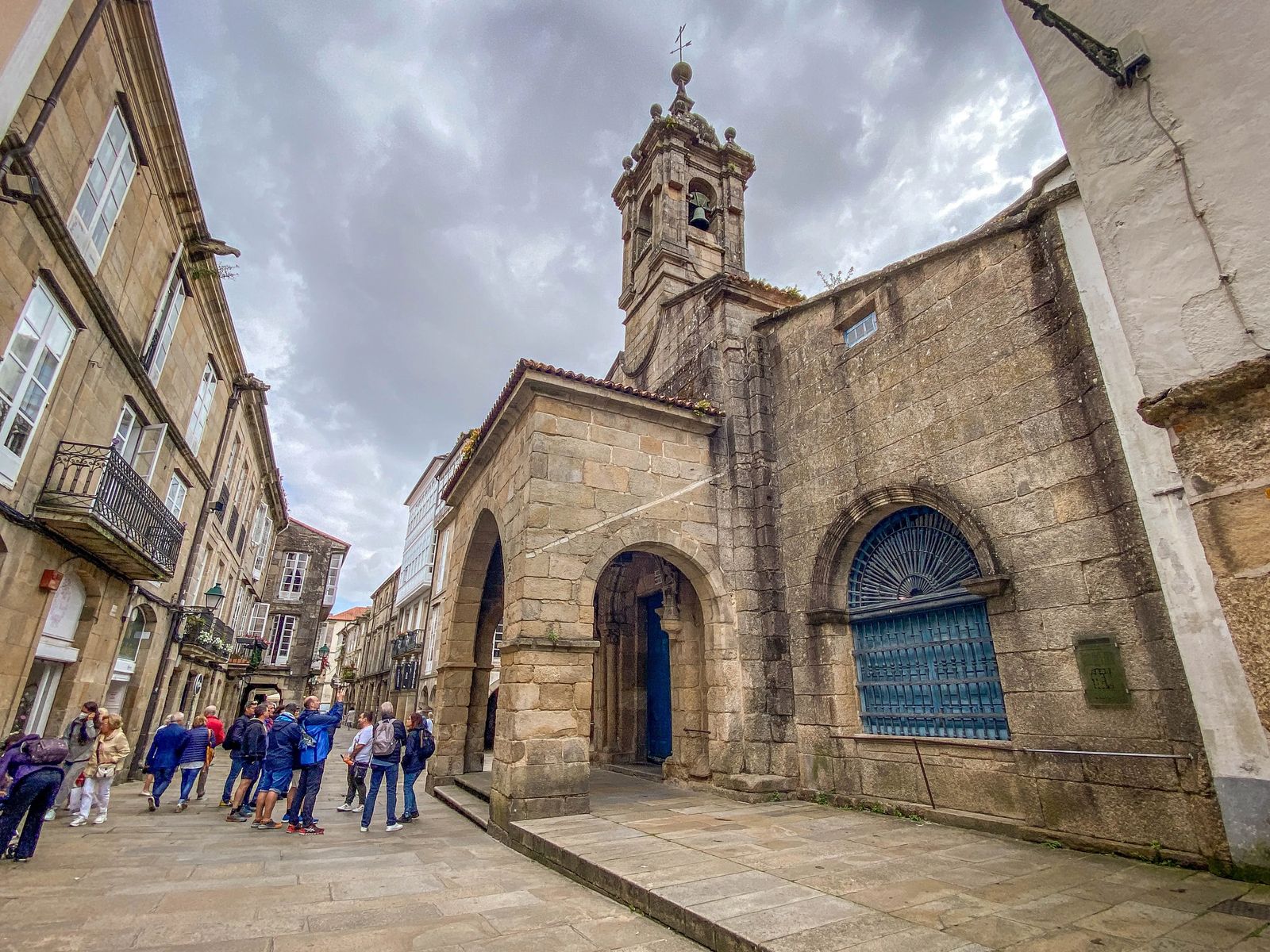
6 - Casco Historico
Declared a UNESCO heritage site in 1985 this historic center of Santiago de Compostela is one of the most popular places in Spain.
If you pop over to the tourism office (at Praza de Mazarelos) you can scan a QR code that lets you download an audio guide that takes you on a three-hour walk through the best spots in the city ending at Alameda Park.
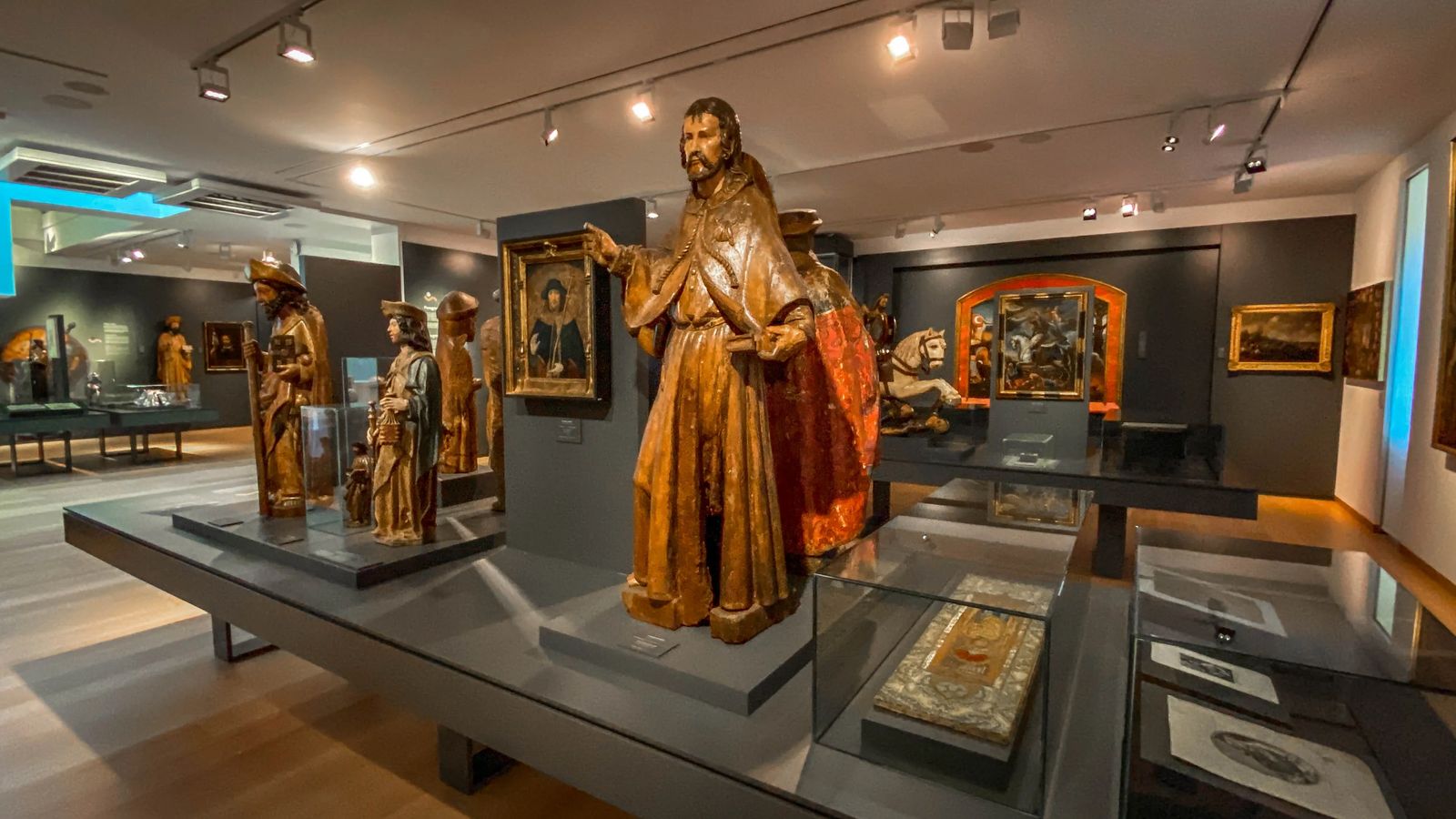
7 - Museum of Pilgrimage
Open 930 am-830 pm (Tues-Fri), Sat 11 am-730 pm, Sun 1015 am-2:45 pm, and closed Mondays
The museum takes you through the 7 different types of Caminos that lead to Santiago de Compostela. It also covers the importance of pilgrimages to the Christian world, including those to Jerusalem, as well as Rome. The museum covers the life of the Apostles who walked with Jesus Christ and where they are believed to be buried based on ancient texts, legends, and traditions of where they were buried.
According to texts and legends, the Apostles of Jesus Christ were said to have been buried in the areas that they preached to. Saint James was said to have preached in Hispana, which is now modern-day Portugal and Spain.
There are hundreds of different artifacts, information boards, statues, religious pieces used in mass, and more. If you go to the very top of the museum and look through the side window, you can see the top of the cathedral as well as get a much closer view of the clock. While you can pay for a rooftop tour of the cathedral, this is a budget-friendly way of seeing it.
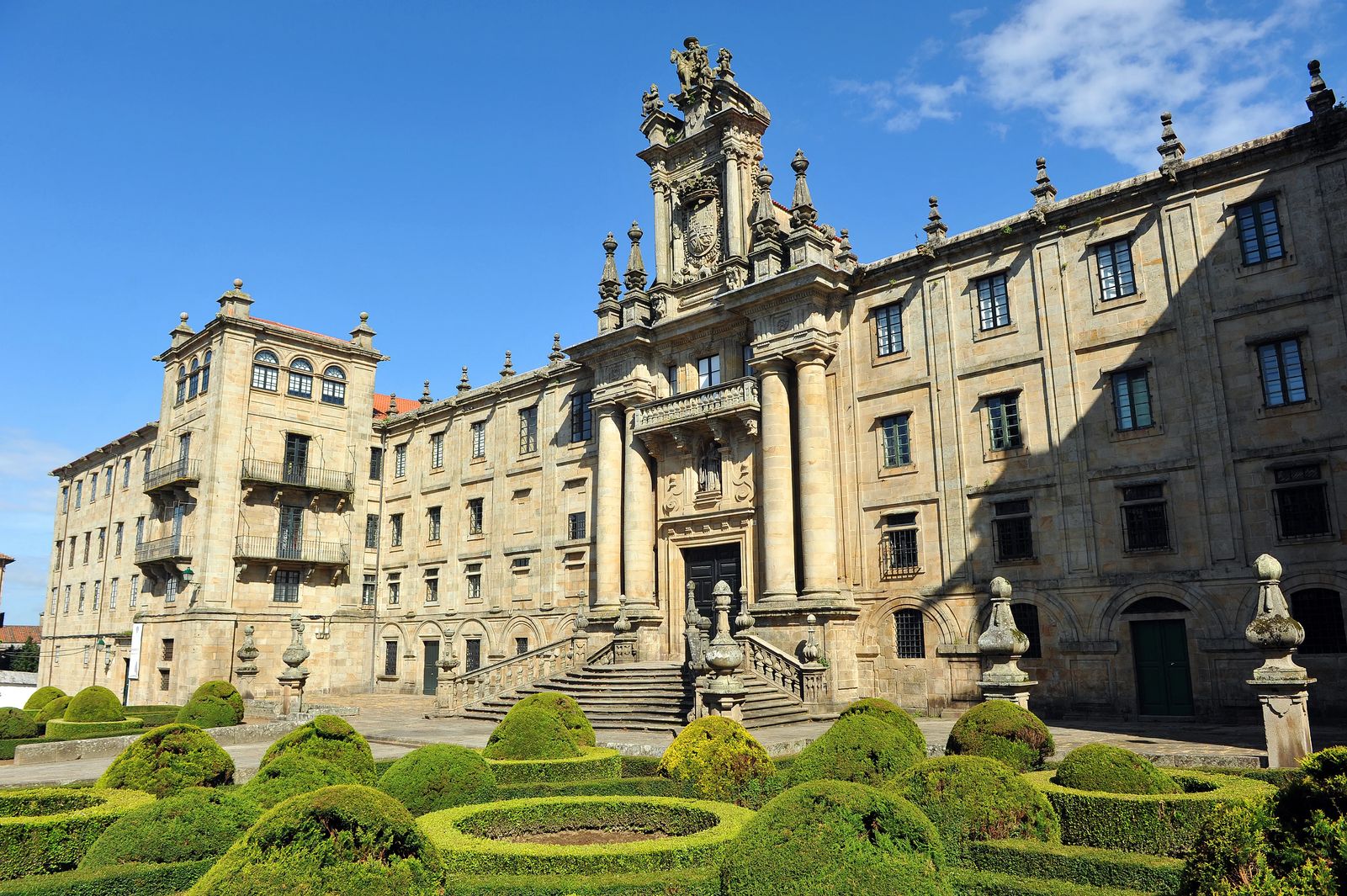
8 - Monastery of San Martiño Pinario
Founded by Benedictine monks in the 9th century, who heard the remains of St James were found here. It is a stunning example of Baroque architecture, with a jaw-dropping wood-carved altarpiece by Fernando de Casas Novoa inside. It costs about 3-4 Euros to enter, but is more impressive than many cathedrals I've been in due to the sheer amount of items brought over by religious refugees fleeing from England when Henry VIII banished them.
It is the second-largest monastery in Spain and was largely rebuilt in the 16th century. The overall theme of the iconography is dedicated to the Virgin Mary, the destroyer of sins, the assumption, and coronation as well.
The Monastery is now used as a seminary for Compostela and studies on Theology and Social Work are the main studies. It also functions as a Museum of Religious Art with 12 rooms filled with paintings, sculptures, goldsmiths, engravings, archeological remains, biblical collections an old printing press, and a pharmacy.
Definitely worth a look inside, and if you want a truly unique experience - you can stay in the Monastery as well! It is called the Hospederia and has 81 rooms with bathrooms, two restaurants, conference rooms, coffee, and TVs with a 24 hour reception.
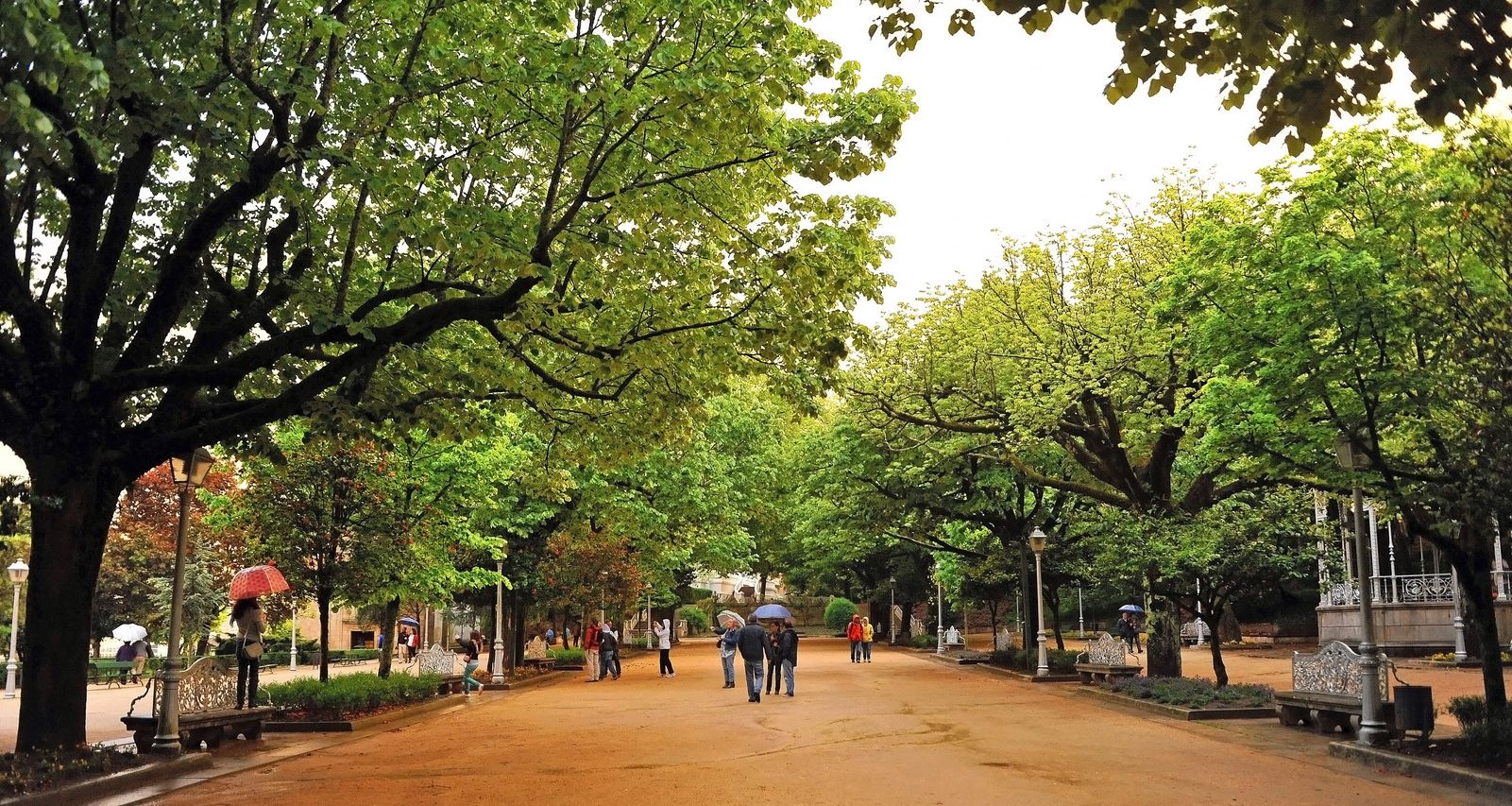
9 - Parque de la Alameda
Open 24 hours, free entrance
Walk among natural pergolas made of horse chestnuts, and live at the enviable photo stop live in Parque de la Alameda. Grab some goods at the Mercado de Abastos (see description below) and have a picnic away from the crowds at the Cathedral.
This park is over 500 years old and is filled with oaks, chestnut trees, eucalyptus trees, Cypresses, and palms with granite benches adorned with fine iron worked backrests.
There are three parts to this park: paseo de Alameda, Carballeira de Santa Susana, and Paseo da Ferradura. The park is next to the west side of the Cathedral de Compostela and is filled with small chapels, fountains, and botanical beauty.
Check out the gas-lit central avenue, which illustrates a quirk of 19th-century Spanish society: There are different walkways depending on your social class.

10 - Museo del Pueblo Gallego (Ethnographic Museum)
Open 11 am-6 pm Tues-Sat, Sunday from 11 am-2 pm and closed Mondays
Formerly a 13th-century convent of Santo Domingo de Bonaval has been transformed into a Museum dedicated to Galician History and culture. The museum highlights the traditional trade routes, the traditional dress of Galicia, the architecture, and the paintings of the people in this region.
While I didn't get to visit this museum myself, I do think it is important to distinguish the different areas of Spain as the cultures are very different throughout each. The people who live in these distinguished regions also hold a lot of reverence and pride for their heritage and traditions. As travelers, it is important to know the differences and be mindful of them.
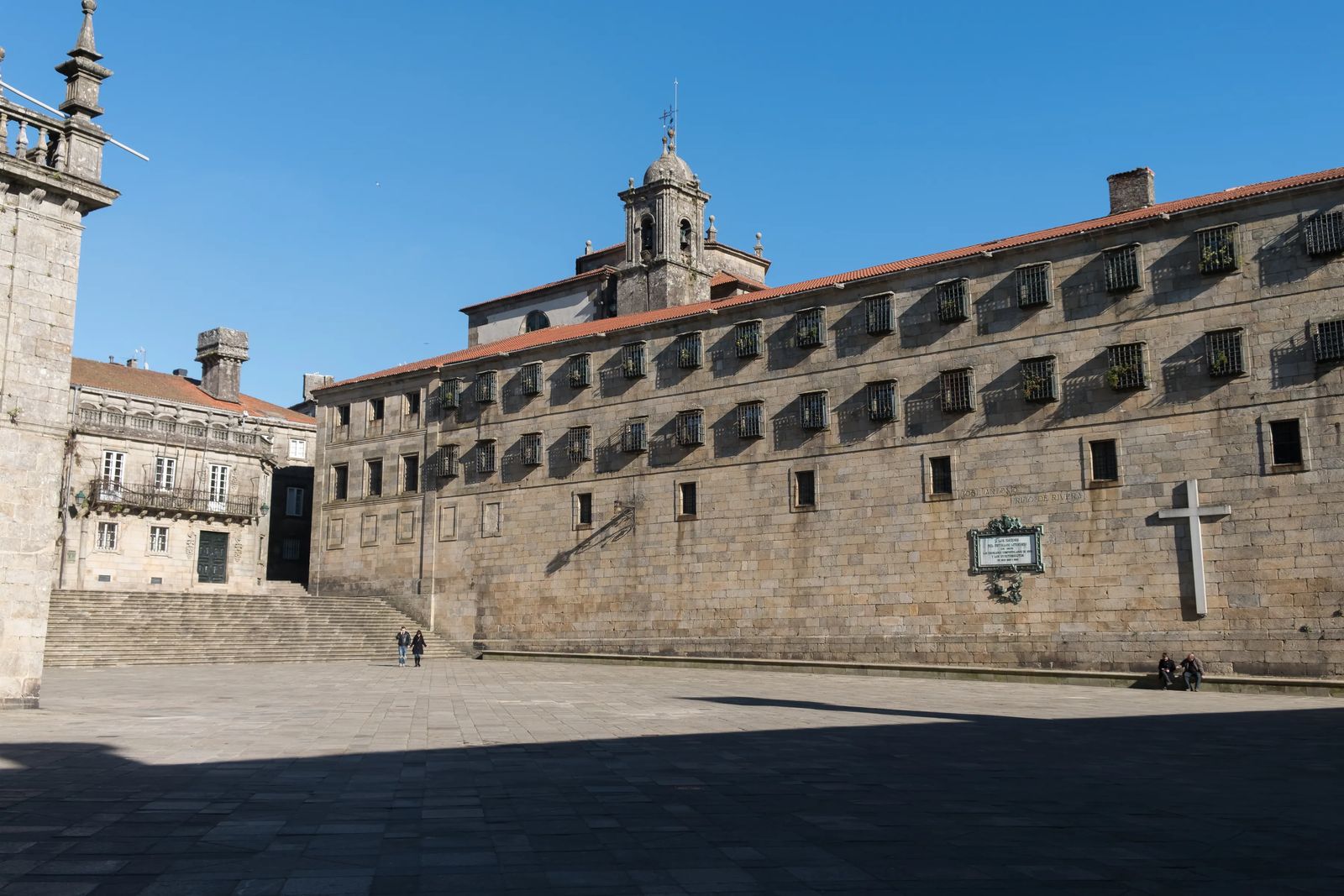
11 - Praza da Quintana and Porta Santa
This was formerly the base camp in the 9th century to look after the tomb of St James to ensure the remains weren't stolen nor the items associated with the tomb.
The square is right next to the Casco Historico, and on the east side abuts the Monastery of San Paio de Antealtares. The west side of this square is the Clock tower of the Cathedral de Santiago. If you look to the top, there are 24 Romanesque biblical sculptures created by Maestro Mateo in the 12th century.
This is also the square where the Holy Door opens on the Holy Year. Holy years happen with St James day (July 25th) fell on a Sunday, and was deemed holy by Pope Alexander III in 1179.
The Holy door is known as Porta Santa, or the Puerta del Perdon (the Forgiveness door). It takes pilgrims straight into St James' Crypt under the main altar of the Cathedral, and the central image of St James on the altar is allowed to be hugged by pilgrims.

12 - Mercado de Abastos
Open hours – Mon-Sat from 7 am to 3 pm
This market has been operating for the last 300 years, with long arched windows and stone walls it makes it feel like the market it being held inside a church.
You can find all local varieties of meats, cheeses, seafood, vegetables, and fruit. I highly suggest doing an Airbnb experience where you can cook with a local, or take a cooking class and learn a new way of flavoring your food as the locals do. It is also a great way to save money to just pick up the food you need, and make sure you have a hotel or accommodation with a kitchen and cook up your own creature comforts to make you feel at home.
It is worth a stop to at least buy a few types of meat and cheeses (what Spain is known for) and have some of your own tapas on hand, or take it to Parque Alameda (see above) and have a nice picnic.
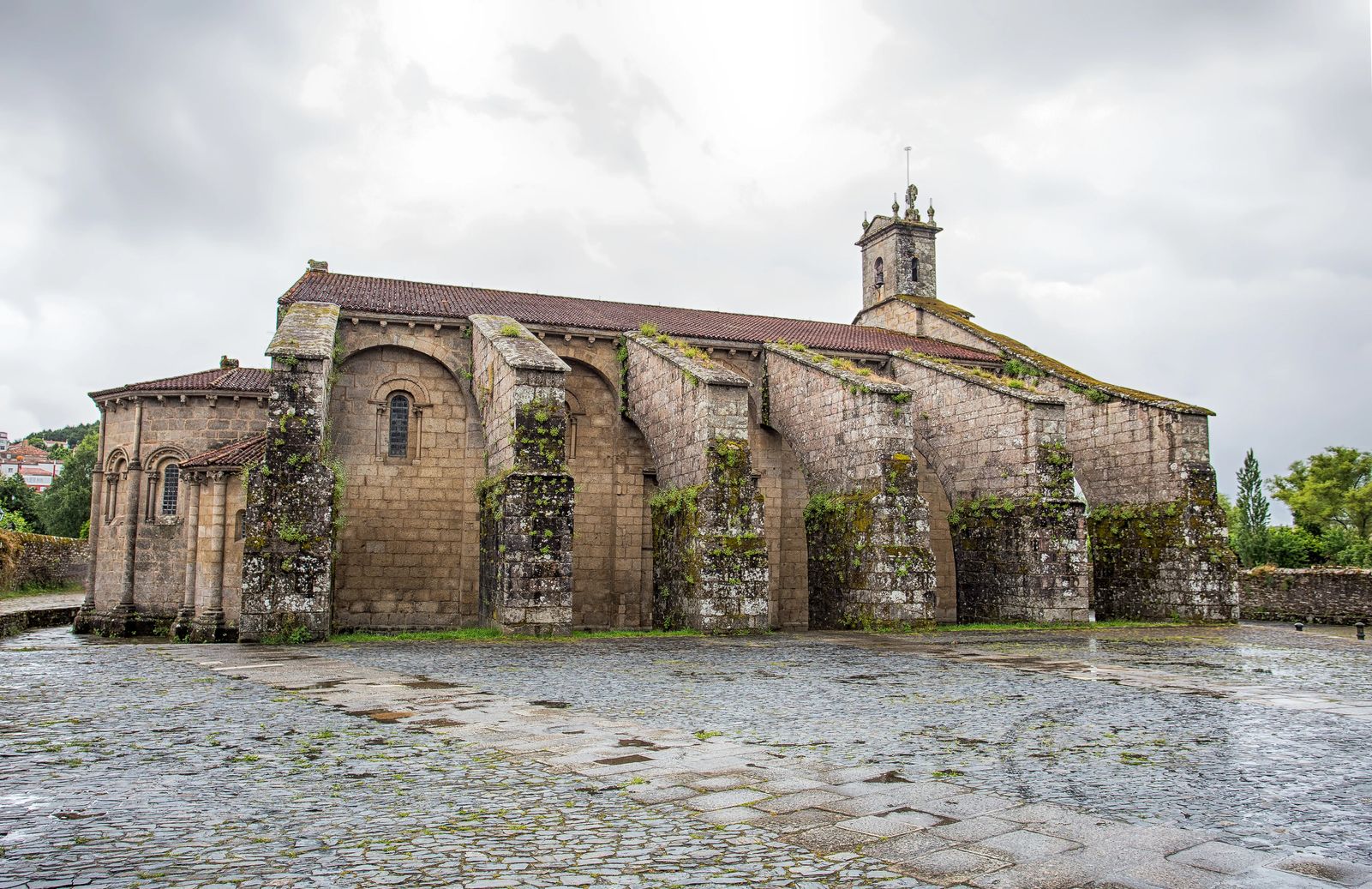
13 - Colegiata de Santa María del Sar
Built-in the 1100s next to the River Sar, the arches and capitals were built by Maestro Mateo, the same sculptor that did Puerto de Gloria in the Cathedral de Compostela. There is a small facade with flying buttresses that were added in the 17th century
Inside is unique in that when you enter it looks like the church is leaning because of how the columns were built. The church was frequently flooded by the River Sar and began to slide, so it had to be reconstructed.
When you enter the church be sure to find the 12th-century baptistry and the Romanesque cloister (enter by the Sacristy) where you can find a collection of artifacts on display inside. (I never was able to visit this cathedral but when I go back it will definitely be one of the first things on my list to visit).
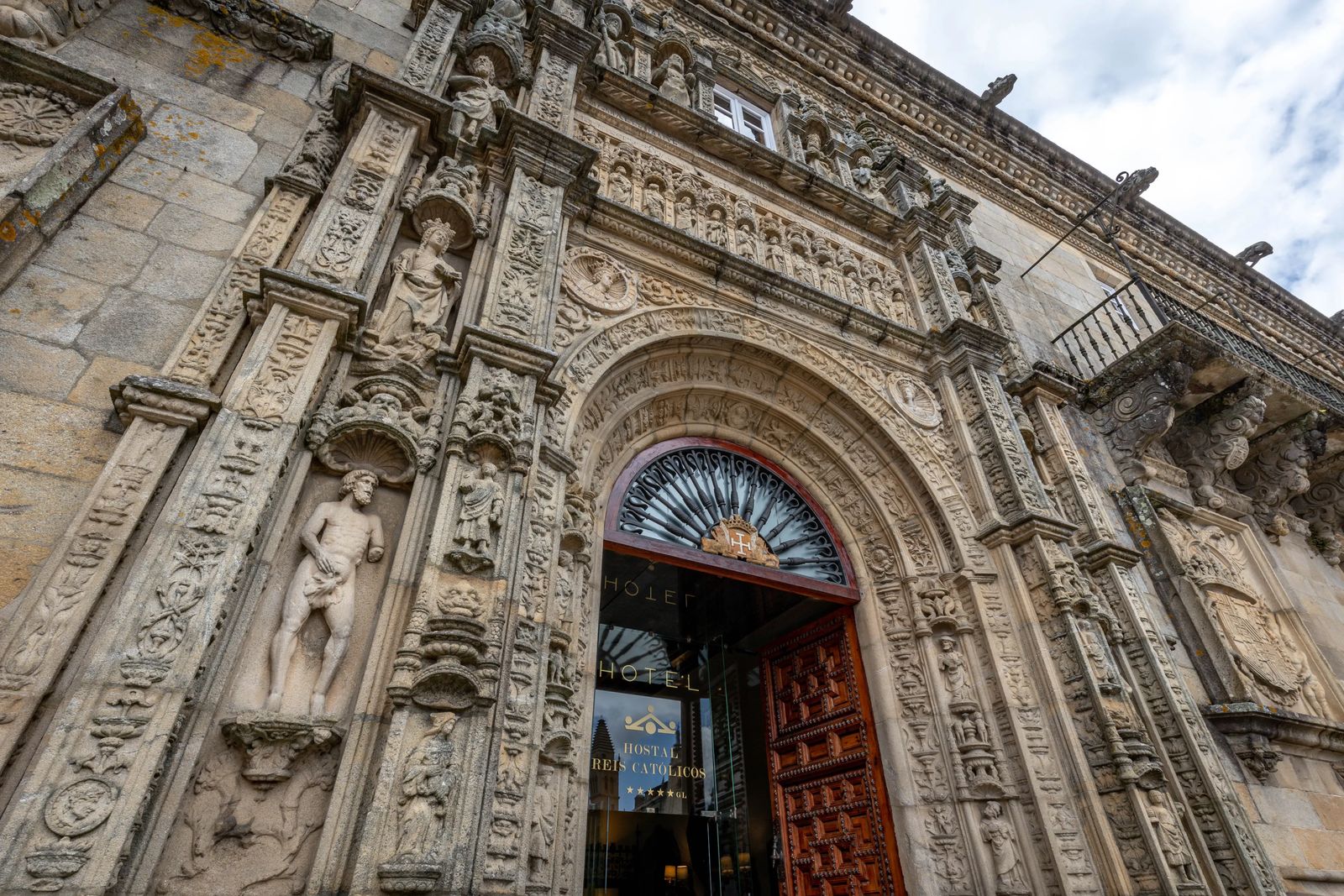
14 - Hostal dos Reis Católicos
From the poorest to even the Spanish Monarchs Ferdinand and Isabel walk the Camino de Santiago, but not all build a hospital and hostel right next to the Cathedral. The Hostal dos reis Catolicos was built in the 16th century by King Ferdinand VI after walking across northern Spain.
The building was designed by Enrique Egas, the ornate facade and main entrance to the now Hotel are quite ornate, and took me a good 30 minutes to just finish taking photos of it. The facade depicts the figures of Adam, St Catherine, and St John the Baptist on the top. On the left, you see Eve, St Lucy, and then Mary Magdalene on the right. The twelve apostles line the doorway into the hotel. If you look at the medallions, those are the royal busts of Isabella and Ferdinand.
There are tours that can take you inside the hotel (well worth it in my opinion) as there are four courtyards. Inside there is also the charming Ogival chapel was declared a National Monument in 1912.
There is also a lovely cafe with fantastic views of the surrounding town, as well as the cathedral that provides a light lunch, coffee, and tea. If you eat there, you can also pop inside to use the bathroom and take a quick look as well.
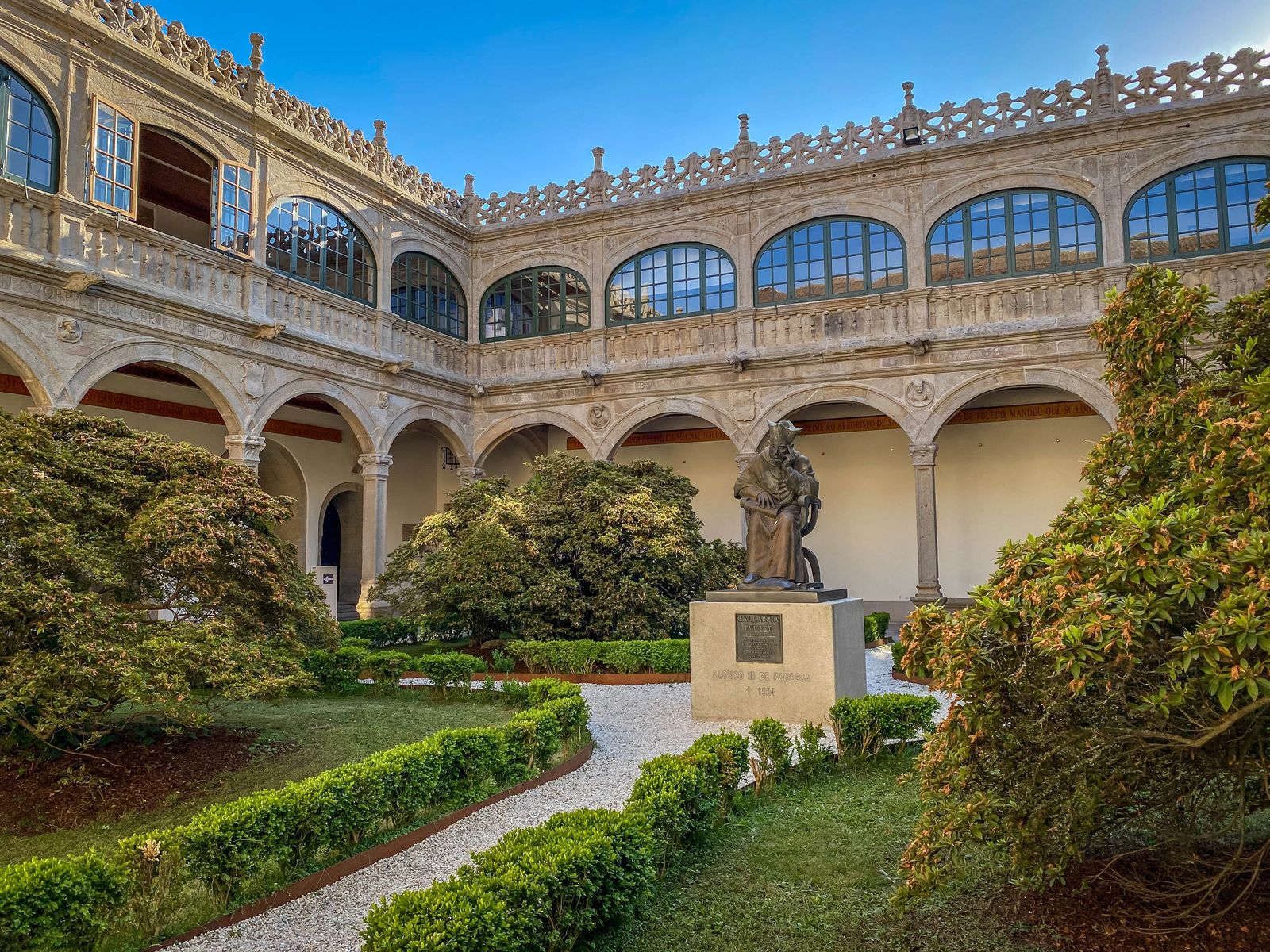
15 - Santiago De Compostela University
The University dates back to 1495 when Lopez Gomez de Mazoa founded the school with the help of San Martino Pinario. Originally it was a school for the poor to help them to read. The foundational studies have changed over the years from scientific fields like veterinarian school and medical school.
There are information boards, 15th-century texts, temporary exhibits, and fascinating architecture. The school currently has over 1 million texts, some considered to be invaluable in nature.
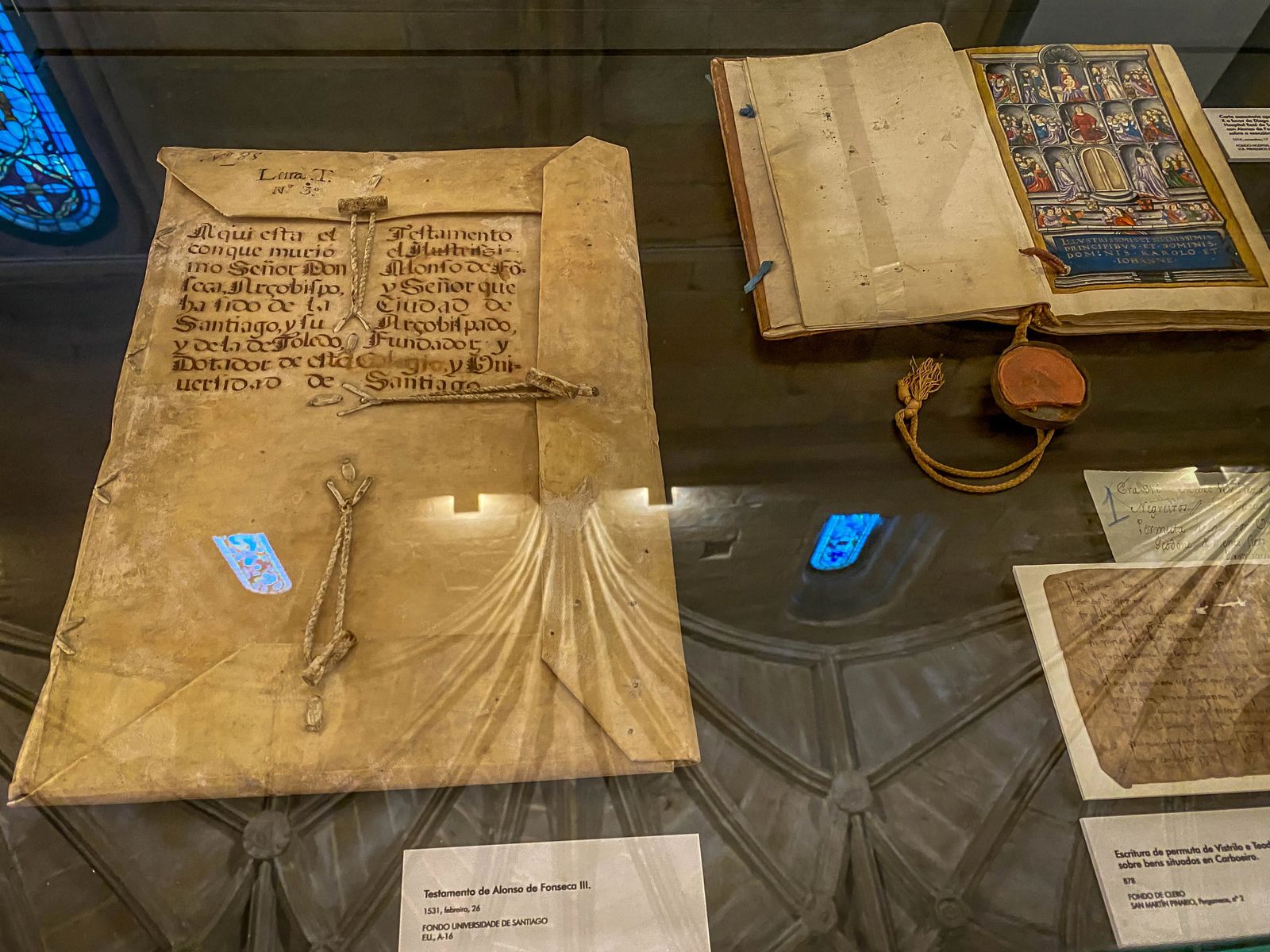
In the center garden square you have the statue of Alonso III de Fonseca, who was named the Archbishop of Santiago de Compostela in 1507. He consolidated the University and provided many artisans with sponsorships and was considered a Renaissance Archbishop.
When I visited there was also a temporary exhibit of pilgrim (or pellegrino) music. The instruments used along the camino were put on display, information cards available, and traditional songs were playing on speakers.
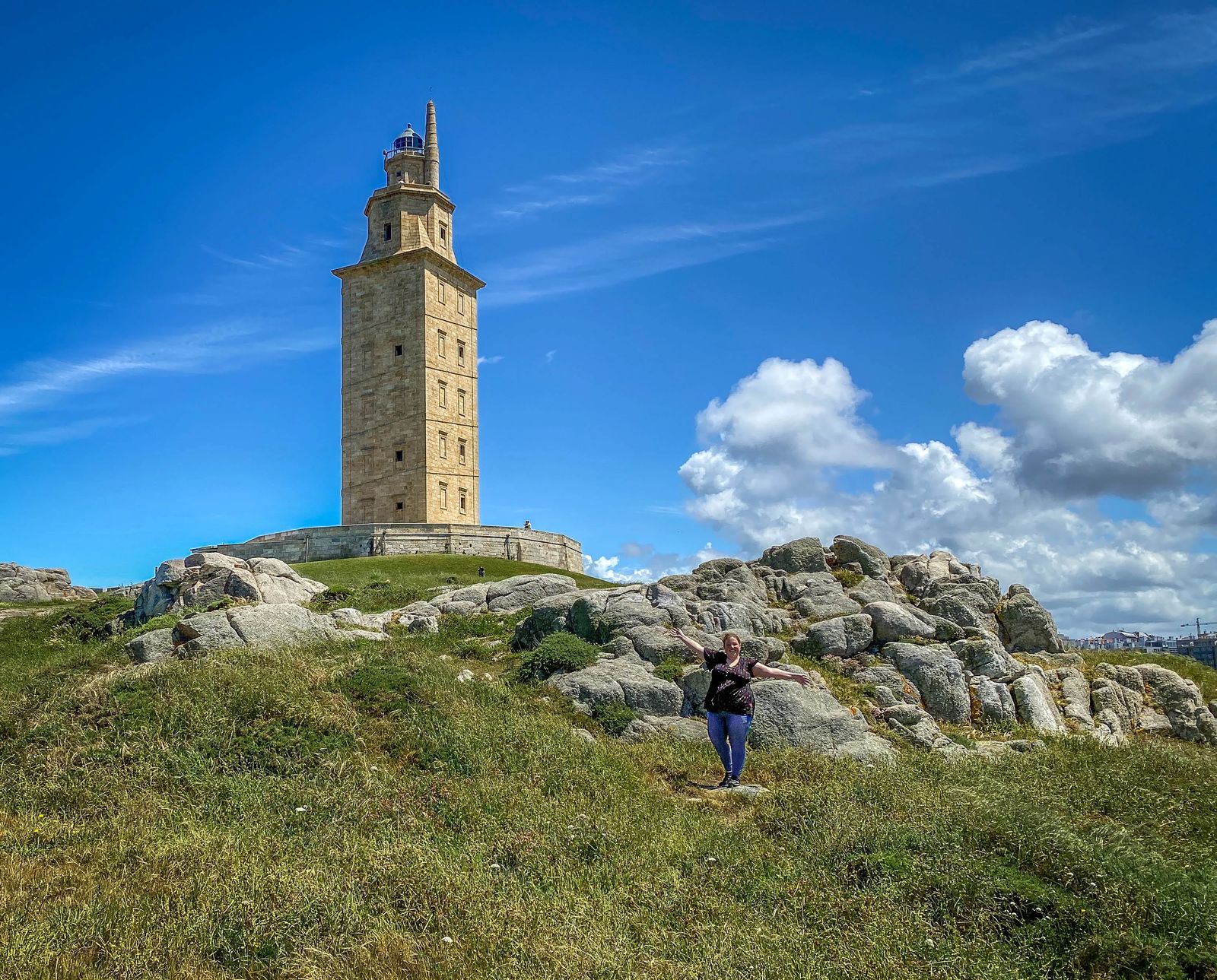
Bonus !- Day Trip to A Coruna
Just a short 30-minute train ride from Santiago de Compostela is the ancient Roman town of A Coruna, where the UNESCO Hercules Lighthouse is. If you want a quiet seaside retreat this is a great day trip from Santiago de Compostela. The food here is delicious, and the stories of female heroism and glass galleries, and tapas culture are what this city is known for.
The shopping here is incredibly affordable compared to the more touristy Santiago, and Madrid. You can stay right on the beach where daily afternoon strolls, food, and concerts frequent this area. There are also loads of funky and fun festivals happening all throughout the summer.
There are so many things to do in A Coruna, it is definitely worth a day trip, if not an overnight stay.

My Takeaway of Visiting Santiago De Compostela Spain
If you decide to visit Santiago de Compostela, I personally found it beautiful, intriguing, and a little sad all at once. Why sad? Well, I looked around at all the pilgrims who had just made their 62 mile/100km journey coming into the square and celebrating their accomplishment and got a little sad I didn't have that same feeling.
While I did make my own Camino in a way, I think traveling solo really is invigorating, but this was one of the few times I wished I could have shared in a journey like they did. I don't think it matters if you are a Catholic or not, if you are Christian and looking for a way to bond with your family, children, yourself, or to make friends - I would highly suggest visiting after walking at least a portion of the Camino if you can.
The surrounding countryside is alluring, and captivating, and will fill your cameras with photos - but the bonds you make with those you choose to travel with will last far longer and be more meaningful.
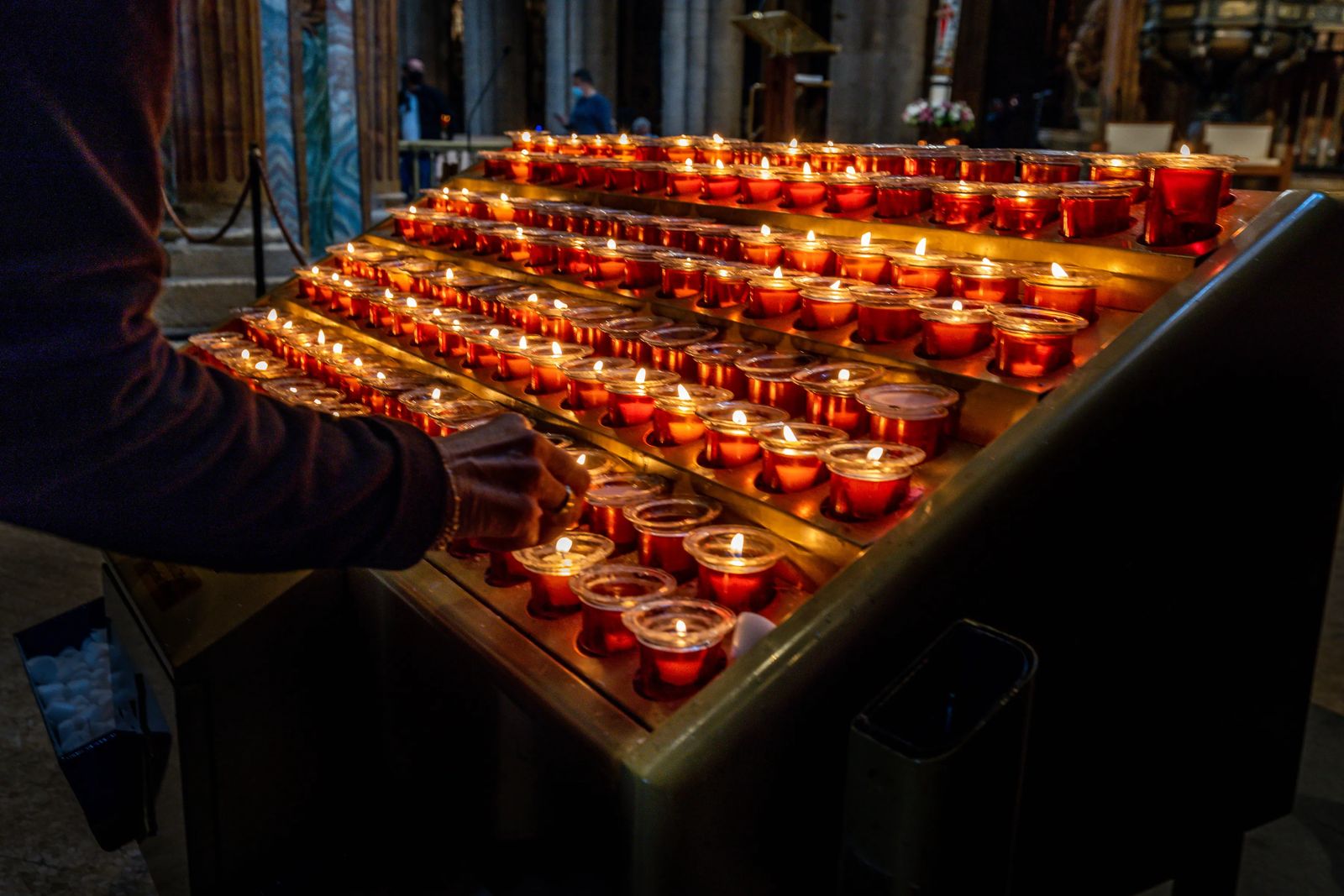
I do think that if you aren't able to walk the Camino for whatever reason, the Santiago de Compostela has a very special feeling to it, the architecture is stunning, and I learned so much from the pilgrim museum and filled my belly with delicious food whilst also creating stronger bonds with my friends who live in Spain.
It is up to you how you visit, but either way, I will always advocate for seeing a UNESCO site and learning about cultures and religions that are different from your own because of how much it helps you grow as a person.
Where To Stay In Santiago De Compostela
Google Map of Locations Mentioned
Like it? Pin it for later! Sharing is caring ;)
.jpg?fit=outside&w=1600&h=2399)
.jpg?fit=outside&w=1600&h=2399)
.jpg?fit=outside&w=1600&h=2399)
.jpg?fit=outside&w=1600&h=2399)
Latest Articles On Culture Trekking
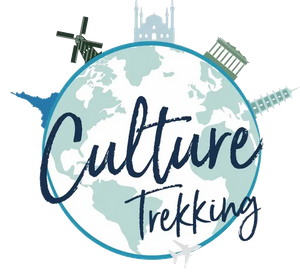

Welcome to Culture Trekking!
My name is Janiel, I specialize in solo female travel, cultural connections, sustainable adventures, food and history to help make your travel experiences fun, meaningful, and delicious. My experience in travel, and my personal story have allowed me to get published in Fodor's Travel, Atlas Obscura, Metro.co.uk, Trip Advisor, and multiple Podcast interviews. You can find me on pretty much every social media channel YouTube, Instagram, Twitter, Facebook, Pinterest, TikTok. To read more about me and my story click here. If you are a brand and would like to work with me, click here.












